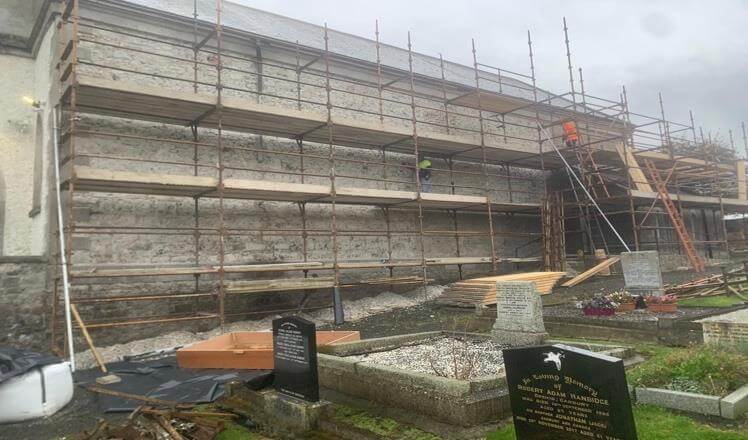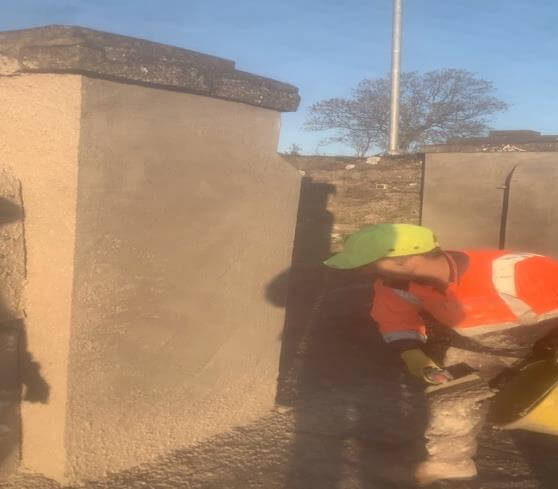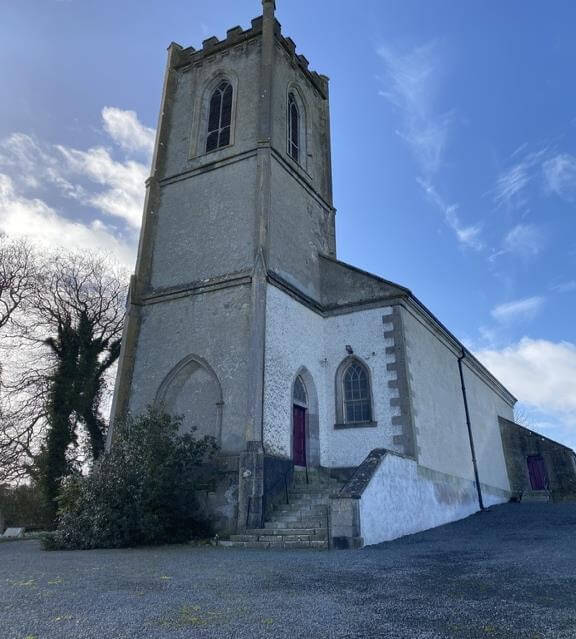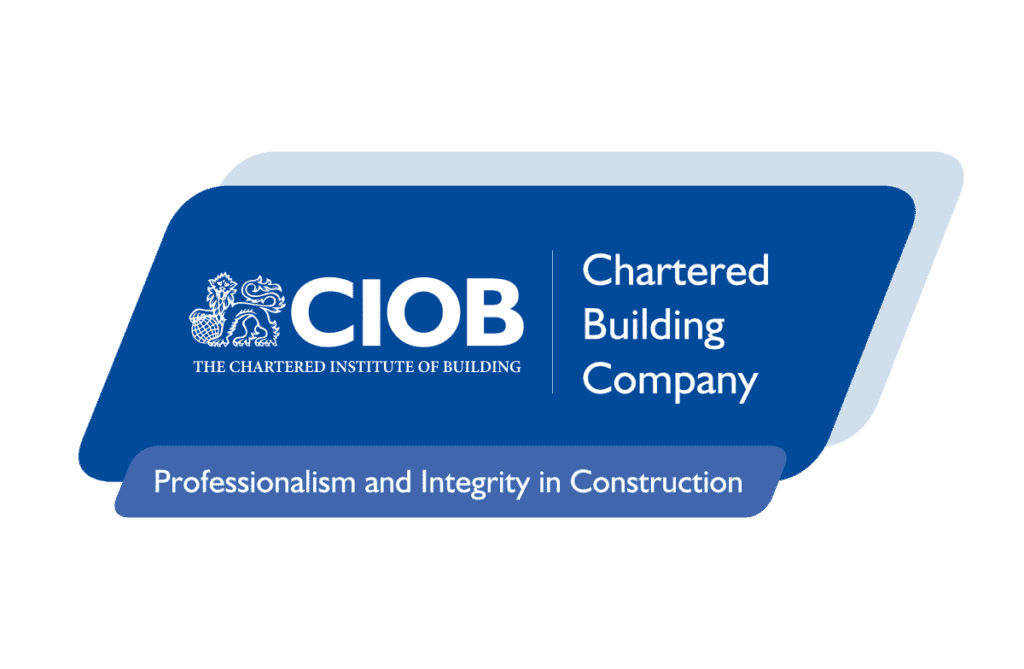Carbury Church is an approximately 300-year-old stone, lime-mortar building located in the rural town of Carbury, North Kildare, a mere stone’s throw from the famous Carbury Castle. This church is culturally significant in its locality as within its grounds it contains various Commonwealth burials and memorials for soldiers killed during the Second World War. It also contains a range of unique stained-glass window lancets. Newform Group was contacted by the main contractor Roscal Ltd.- based in Co. Meath- to undertake the re-plastering of one side-elevation; approximately 100m2, which had to be lime-rendered.
Before even setting to work on this project, my team and I foresaw the inherent challenges of this particular site. To the intrinsic difficulty of restoring and blending old lime-mortar walls was added the additional challenge of restoring an historic church building. Right throughout the history of Ireland, church and chapel buildings have always been the most architecturally rigorous and complex; and therefore in restoring such a building, without betraying its original construction, we knew from the outset that we would have to work with exceptional care and attention-to-detail. To this effect, as MD I took efforts to reach out to many of our specialist and conservation operative contacts in search of any information regarding original church architecture and construction methods which might help us restoring the original condition of the buildings
Naturally, many of these 300-year-old or more methods are outdated and for a range of reasons could not be recycled; however, many of these contacts did prove fruitful, as for example we learnt how to achieve the final roughcast (‘wet-dash’) appearance of the gable, using only lime and 6 – 8mm pebble stone provided by Roscal Ltd; completely avoiding the use of cement, sand and gravel commonly applied to contemporary roughcast surfaces. This was essential in order to retain the original appearance of the church.

Safety measures to protect the delicate historical infrastructure
As MD, I ensured from the beginning of this project that my crew and I erected various safety measures to protect the delicate historical infrastructure we were tasked with working around. This included, for example, the use of netting over the old walls we were working upon whilst they were ‘curing’, to ensure they were not harmed by any adverse weather conditions; as well as taking care to work safely away from the church’s ancient stained-glass windows as far as was possible. Moreover, Roscal Ltd. also provided various SSOW to further support our caution. This included erecting a scaffolding- which in no way touched the building itself- and TAG, as well as removing all old lime-mortar before we began our work.
They also provided us with a mixer and all materials; NHL 5, NHL 3.5, plastering sand, rough sand for scud coats and 6 – 8mm pebble stones for wet dash, which we situated and used at a safe distance from the church building and perimeter walls. Finally, we also made sure to lay down a variety of tape and polythene covers across the church grounds we were working on. This was both to protect the ancient soil we were crossing over, as well as to keep clean the graveyard site and walkways we were directly beside.
Eco-Friendly Materials
As part of both Roscal Ltd. and our commitment both to environmental protection and conservation suitability, all materials used in this project- namely NHL 3.5 + 5 Lime and rough sand- are eco-friendly and in keeping with the conservation standards of this particular building. Gathering these materials, we began the project by applying a scud coat (4 buckets of rough sand mixed with 2 buckets of NHL 5) over all stone work, thereby providing a base for subsequent coats. We left this initial coat to cure for approximately 10 days. Throughout this project- as in many of our previous and subsequent heritage works- we made sure to be very careful and patient with the curing process for all walls worked upon, as ignoring or rushing this process could very easily lead to permanent damage being inflicted on the old, delicate walls. Therefore, during this project, we made sure to leave sufficient time for wall-curing between each coat applied.
The ‘wetting’ process
After the initial coat, we applied a dubbing-out coat (4 buckets of sand and 2 buckets of NHL 3.5 mixed), making sure to fill all major holes and straighten in order to provide a strong base for subsequent coats, before leaving for a further 14 days to cure. A fortnight later, we applied a scratch coat (4 buckets of plastering sand and 2 buckets of NHL 3.5 mixed) and straightened and scratched the walls rough with a yard brush in preparation for the next coats.
We then left this coat for a further 3 weeks to cure with netting draped over it, taking care to spray every other day to retain moisture within the walls and allow them to cure slowly and fully. This ‘wetting’ process is particularly important in heritage works such as this, as the old walls will need considerably longer to cure than new ones. Finally, we applied the final coat followed by a wet-dash finish (1 bucket of plastering sand, 1 bucket of large stone, 2 buckets of small stone and 2 buckets of NHL 3.5 mixed together). Once the wet-dash was applied, we draped the netting back over the wall and sprayed repeatedly to retain moisture in the walls during the final curing process

Breathing new life and future strength into this historic and locally admired building
Reflecting on this project, despite the inherent challenges in restoring old lime-mortar walls- especially for old church buildings- the client, the lead contractor Roscal Ltd. and my team and I were very satisfied with the final re-plastered gable. We successfully lime-rendered the side-elevation so that it seamlessly blends with the old, original walls of the church; allowing us to breathe new life and future strength into this historic and locally admired building whilst maintaining its heritage.




